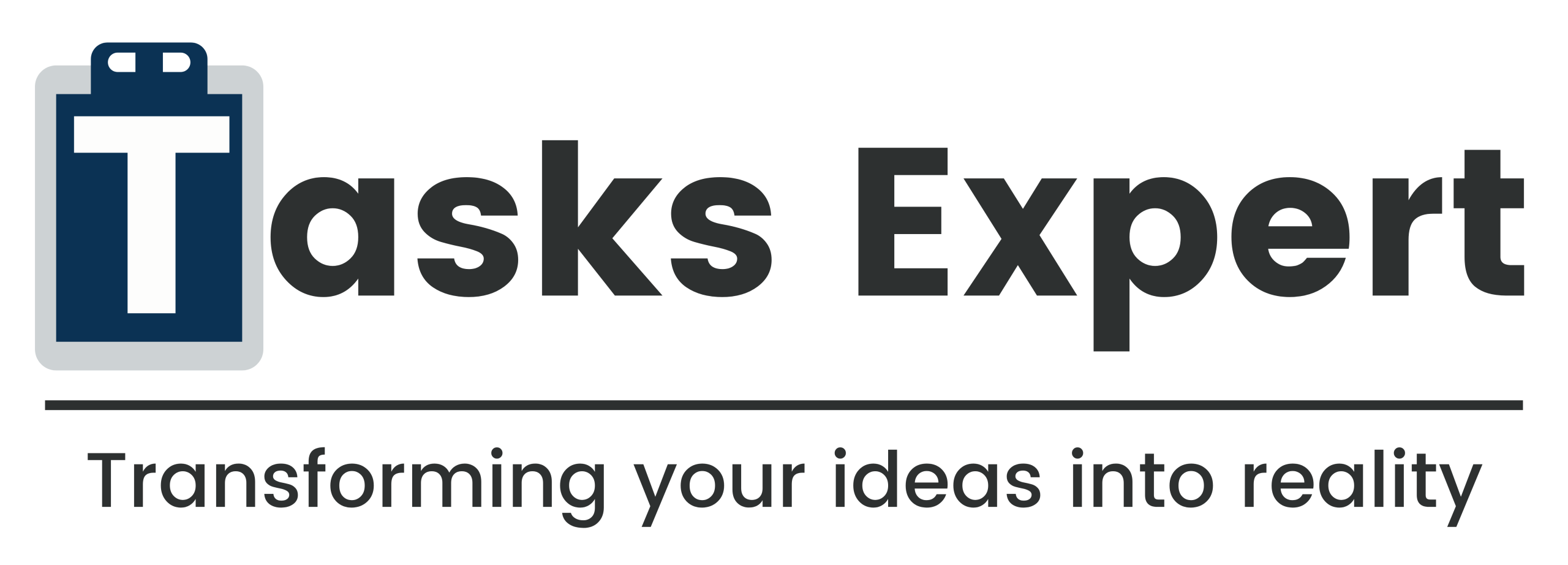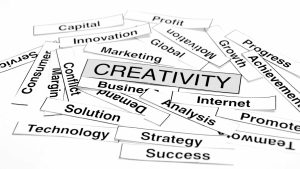Introduction
Content Performance Marketing is the most preferred method of choice for brands. Looking to achieve tangible, measurable outcomes from their digital marketing strategy. Unlike content marketing, which often supports reach and exposure ‘just in case’, performance marketing is always just for the sake of direct results.
For ever-diminishing budgets and ever-increasing demands, marketing leaders are crucially looking to produce quantity and quality content. Content Performance Marketing solves that by attributing results to every bit of content and reporting back on performance indicators. Such as engagement, conversions, and ROI using real-time data.
Marketers can respond in real-time to what’s happening in their campaigns. We can fine-tune strategies for better insights. Avoiding a waste of resources on what’s not working by increasing the use of analytics and tracking of behavior.
Such a transition allows teams to operate quickly and adaptively with fewer errors to get more revenue-producing content. This change is causing businesses to also give up vanity metrics and adopt a process around accountability and refinement.
Why Traditional Strategies Can’t Keep Up in driving traffic to their sites?
Bunches of the old-time content strategies have been driven by folklore, like that you create good content and hit “publish,” and then the traffic will come. When content marketing was in its early stages, the digital climate in 2020 demanded more precision and strategy. With algorithm updates, consumer habits shifting, and growing competition, brands can’t rely on hunches or vanity metrics anymore.
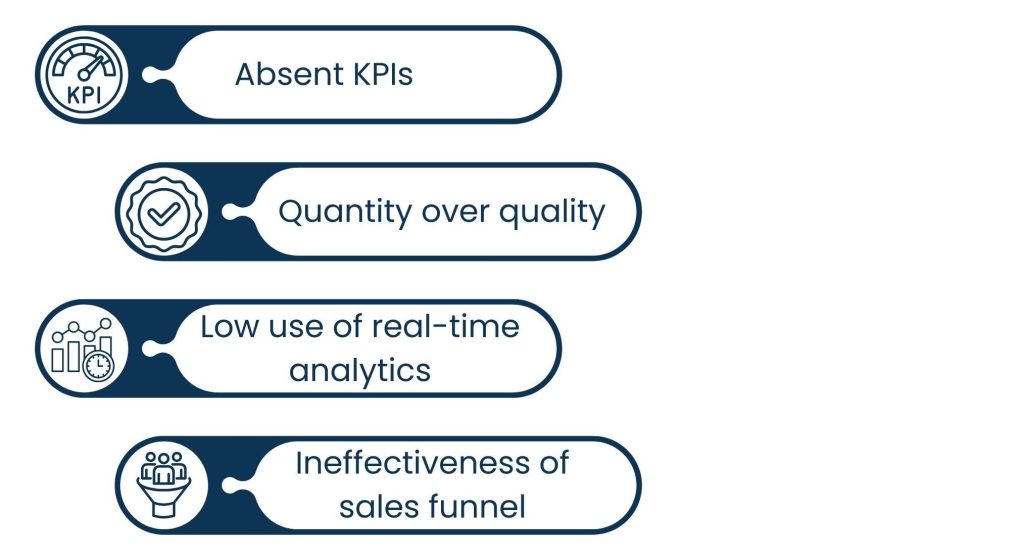
Here are some major limitations of the traditional content strategy:
- Absent KPIs: Many old, obsolete content initiatives may not even specify KPIs beyond a handful of basic metrics, such as page views or social shares.
- Quantity over quality: Conventional wisdom is that you should post at regular intervals, which you should, but large volumes of unrefined content with no target or search button pushing will be a waste of everyone’s time.
- Low use of real-time analytics: With traditional content strategies, you are still playing the game by looking in the rear-view mirror and end up missing critical opportunities for mid-course correction.
- Ineffectiveness of sales funnel: Content may work for the top of the funnel, but it never contributes to conversion or retention strategies.
This is an inflection point in terms of scalability and ROI. This is how brands are progressing to Content Performance Marketing: a close-knit approach that merges the best of data-driven content marketing, regular content optimization programs, and insights-oriented content performance analysis. It is behaviourally based on predictive insights, and these insights are now what drive marketing decision-making.
Now that SEO and content performance are so closely tied, brands understand that it’s not just about ranking. Furthermore, it’s about converting, engaging, and leading the audience to business support.
What is Content Performance Marketing & How It’s Different?
The key distinction of Content Performance Marketing from the conventional content model is that it is based on measurable results and ongoing optimization. Good performance-driven content is more than just a vehicle for the volume of output or a brand’s mere presence; it’s a system designed to drive specific business results.

1. Metric transparency:
With content performance marketing, every item gets a goal and is held accountable. Bounce rates, conversion rates, scroll depth, and time on the page, among others, aid teams in determining. Whether the content is resonating with its target audience. In place of vanity metrics, these “actionable insights” ensure that each piece of content is contributing value somewhere in the funnel.
2. As needed optimization:
Performance marketing is well opposed to the scheduled content calendars. Elegant content-performance metrics let marketers see exactly how each blog, video, and landing page is doing in real-time. If a page has high bounce and low conversions, it’s on the hit list, waiting for its makeover. It is constant testing and iteration that provide more intelligent use of your content investment and better results over time.
3. Better ROI tracking:
It’s not always that traditional efforts (like the example here) tie content closely to revenue. When we do data-driven content marketing, we can start to close the loop on the connection between the individual content that we produce and the actual dollars we make. Whether it’s an e-book that drives B2B leads or a blog post that influences a sale, performance-marketing tools make allocating and optimizing for such value more straightforward.
When the team connects SEO and content performance, they see gains in search visibility. And they track conversion traffic as well. Content, in other words, now simply can’t be enabled; it’s accountable, it’s adaptable, and it’s integrally related to growth. This game of strategic transparency is one explanation as to why increasingly large numbers of businesses, marketers, and brands are moving away from the relatively archaic content practices mentioned earlier and adopting performance-first strategies that achieve real business impact.
Key Facets of a Performance Strategy
1. Content Optimization Strategies
Performance marketers don’t just publish, they obsessively iterate and refine. All content, whether it’s an article, blog post, video, or social media post, is analyzed concerning KPIs to see how much love there is for it. In the world of email and marketing channels more broadly, tools like A/B testing enable marketers to test variations of headlines, CTAs, or even layouts, to see what resonates best with their audience.

Keyword performance allows them to constantly update content to reflect updated search trends so that it is not an internet dinosaur. Heatmaps reveal users’ activities on a page so you can make specific improvements. Behavioral tracking adds another layer by identifying what content formats and topics are converting or engaging people.
These approaches feed into a virtuosic circle of continued advancement. This time, content is not simply published to the web, but it evolves according to user behaviors, search engine algorithms, business KPIs, etc. It keeps content fresh, living, and breathing, and it also reaps long-term dividends. Content that went through an optimization process, that you sweated to put up in the first place, yet still generates the goods.
2. Content Performance Metrics
Content cannot be measured in terms of page views or traffic alone. When you’re doing Content Performance Marketing, what you’re guiding is how content works for the business outcomes that you want. By monitoring the types of content that are contributing to key content performance indicators (KPIs), marketers gauge how well each piece of content is performing at different points in the customer journey.
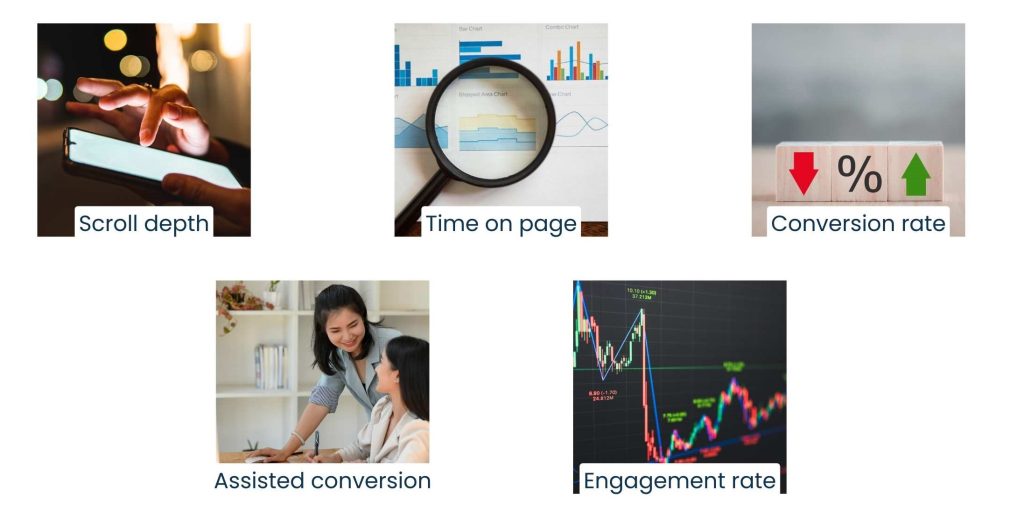
Key metrics include:
- Scroll depth: You can even monitor how deeply visitors are scrolling through the page, reflecting content engagement and layout effectiveness.
- Time on page: This enables you to know how long visitors are sticking around, which provides some sense of whether your content is engaging.
- Conversion rate: It is a tool we use to gauge how many people do what you want them to do – whether that is filling out a form or buying something – so it gives you a direct view of the impact of that piece of content.
- Assisted conversion: Shows how much content helped a conversion, though not as the final touchpoint.
- Engagement rate: A go-to metric for how well your content is being digested overall by an audience, and whether it is being shared, clicked through, and so on.
These are the types of things that inform decisions. It enables teams to hone things that are working on a content level and tweak them.
3. Data-Driven Content Marketing Tools
Marketers depend upon a powerful set of content marketing software to implement an effective Content Performance Marketing strategy. These platforms also provide insights in addition to the performance report that drives optimization and future content planning.

Analytics platforms such as Google Analytics 4 also provide a wealth of insight into the behavior of users on your site, where they come from, and how well your content is performing throughout the customer journey. Heatmap/Web forms tool – Hotjar/Crazy egg Heatmap web – Hotjar/Crazy egg allows us to view with blobs of color, indicating to visitors, what they need and what they do not need, clicked and hovered on the page.
Semrush, Ahrefs, Screaming Frog (and plenty more) can take the pulse of how well content is, from both a technical on-page SEO standpoint, and also how visible and competitive it is. And, on the other side, marketing automation tools such as HubSpot and Marketo allow you to gather data like this, author, AB-test, track leads, and even personalize on a mass scale.
Combined, they help teams build, test, and iterate on content using live event data. This technology-enabled approach also creates opportunities for continuous improvement, increased engagement, and more impactful ROI—all cornerstones of a content performance approach that performs.
Also Read: Telegram/Discord Channel Moderator Services
SEO & Content Performance
Two natural search partners are finally accepting their common fate: SEO & Content. Great content with no audience is a waste. The right people may convert, but they are a game that may not be what it needs to be. Maybe not the best analogy, but it’s what I’ve got.
Search engines prefer informative and user-friendly content. This is why blending SEO and content performance is crucial. Consequently, those brands that can merge SEO with performance insights are driving impactful traffic with great conversions.

Optimizing for keywords is still just as important as it ever was, but they’re now just one metric of many playing into data like dwell time, scroll depth, bounce rate, and mobile performance. These are the metrics that make marketers no longer simply describe ranking well on the SERP, but they also make sure users are interacting with the content they discover.
SEO is no longer an isolated specific task for performance marketers and is now part of a holistic or data-driven content marketing strategy. Content is written from the get-go for discoverability and metrics. Optimized headlines, bite-sized content, fast-loading pages, and a singular focus for CTAs ensure all assets can add weight to SEO and ROI on marketing.
This matching confirms companies have the right traffic, the interested, engaged traffic, with which they can convert. And when that SEO is informed by insights from content performance, the result is a smarter, more successful online existence that can be capitalized on both for immediate objectives and for reaching strategic goals.
Making the Move To Performance-Based Content
So, if you’re transitioning from an organically centered content strategy into a performance-based content strategy, this can seem intimidating, but if you do stick with it and see it through, I believe you’ll find it’s a good deal less intimidating and a good deal more rewarding than what I’m recommending.

Let’s break this down on a step-by-step basis:
- Analyze your content: Your content is your best source of inspiration as to what you can write and talk about, and should also educate you as to where you have been a success, what you excel at, and what you lack.
- Develop and track KPIs: Identify Key Performance Indicators (KPIs) for the events that are aligned with business objectives (lead capture, increase brand awareness, increase conversion rates). It gives your team something to look at and say, “This is what success looks like for the project.”
- Use data-driven tools: In-depth real-time data monitoring with Performance, user engagements, and Content Engagement options are provided by data-driven Best content marketing software like Google Analytics 4, HubSpot, and Semrush.
- Update and repurpose existing content: Turn poor-performing assets into content that effectively reuses keywords, headlines, visual content, CTAs, etc. Test the A/B variants to determine the best way to communicate with the target audience.
- Content into the funnel: Have all content pertain to specific stages of the buyer’s journey and target a certain segment of your audience.
- Keep optimizing: Even if your content is doing well at any moment, that is no guarantee of how it will perform in the future. How: Meet frequently to review success measures and continue to make a myriad of tiny improvements to keep content relevant and working.
If you take this approach to those steps purely from a performance-first mindset, then your content (which was once just a digital asset in your archive) becomes actual, hard-working, growing assets for your business and long-term ROI.
Upcoming Developments In The Performance Marketing Of Content
Content Performance Marketing is evolving as the online environment does. Below are trends that will be altering how content is created, optimized, and evaluated.
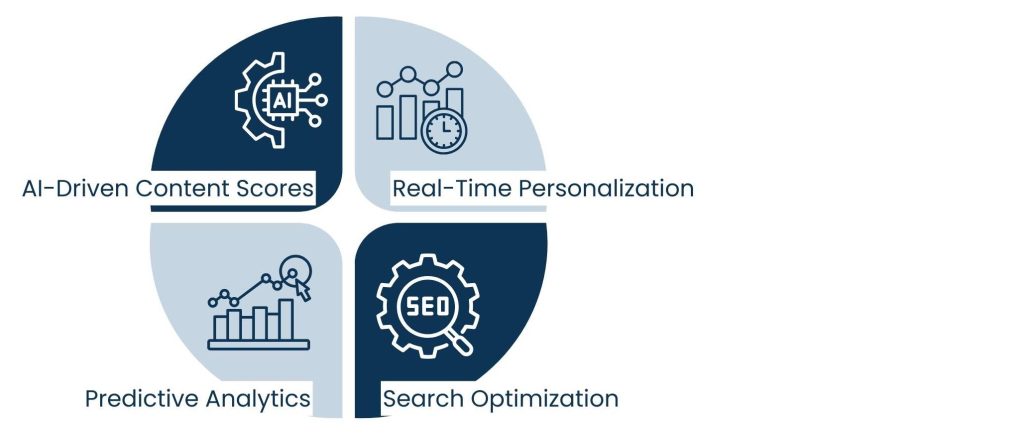
1. AI-Driven Content Scores:
Artificial intelligence scoring of the quality of content, even before publishing, predicting performance, and recommending improvements. The rinse-and-repeat metrics – tone, readability, keyword density, and structure – to rate content on how it could do, handing writers signals during production.
2. Predictive Analytics:
They now bring in historical and behavioral data to predict content performance in the future. It helps to reach the audience and use resources more intelligently to stay ahead rather than behind the competition.
3. Real-Time Personalization:
Dynamic content responds to user action, personalizing experiences that drive engagement and conversion. Using CRM data and behavioral triggers, websites and emails can deliver tailored content to every visitor, making it just that little bit more engaging and effective.
4. Search Optimization:
Voice and Visual Search: Voice search and image recognition are driving new search functionality that content needs to perform. This includes the practitioners of conversational keywords, structured data, and images, by which I mean alt text, captions, and schema, and all of that, to stay present on all of these platforms.
These are signs of a future in which SEO and content performance are closely integrated, and the content will have to do more than educate – it will need to demonstrate the effect it has had. Early adopters will reach and engage audiences in a meaningful way and will see long-term digital growth.
Conclusion
In the ever-changing online world, content can no longer just be present; it must convert. Content-performance marketing provides the clarity to react by bringing the storytelling and precision of creativity and insight. No longer are old methods of sheer volume or vanity metrics the focus as marketers shift to more measurable and iterative methods.
Through data-based, content marketing, brands can really discover what content is connecting and converting and keeping that audience. With such tools and metrics that provide real-time feedback, it’s much easier to make changes, optimize behavior, and tie every piece of content back to our investment in it. This way, your initiatives are supporting business objectives all the way through the funnel.
Whether you are working to track content performance metrics, optimize for search, or use predictive analytics, this strategic approach enables teams to create content successfully.
Delivers results. In a world of content pollution, only content that is purposeful and high-performing will engage people and make an impact.
The future of marketing isn’t more content; it’s smarter content. Content Performance Marketing is not a trend, it’s a strategic move. It provides marketers with the ability to prove worth, defend ROI, and refine outputs consistently.
If you are still grappling with legacy metrics like views and likes, it’s time to ditch that. In an era of data-informed content marketing, performance is paramount. And the ones who can crack it will guide the future of digital marketing.
About Us
Tasks Expert offers top-tier virtual assistant services from highly skilled professionals based in India. Our VAs handle a wide range of tasks, from part time personal assistant to specialized services like remote it support services, professional bookkeeping service etc. Furthermore, it helps businesses worldwide streamline operations and boost productivity.
Ready to elevate your business? Book a Call and let Tasks Expert take care of the rest.




